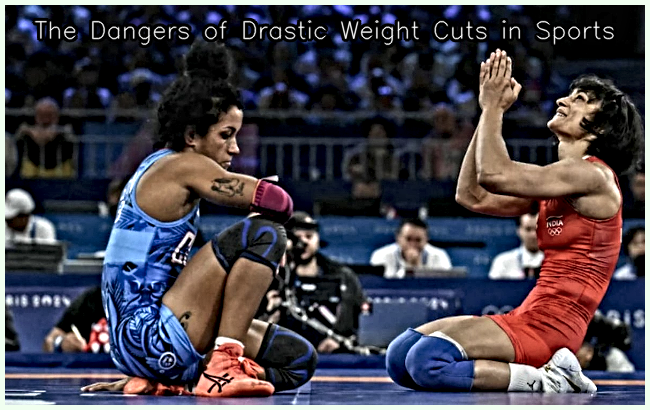The Dangers of Drastic Weight Cuts in Sports
Weight cutting is a common practice in many sports, particularly in combat sports like wrestling, boxing, and MMA. Athletes often cut weight to compete in a lower weight class, giving them a size and strength advantage over their opponents. However, this practice can be dangerous and potentially harmful to an athlete’s health, especially when done in an extreme and drastic manner.
Recently, Indian wrestler Vinesh Phogat made headlines for her impressive performance at the Tokyo Olympics. However, her journey to the Olympics was not without its challenges. In 2018, Phogat suffered a serious injury during a weight cut, which forced her to withdraw from the Asian Games. This incident shed light on the dangers of weight cutting in sports, particularly for women who have different hormonal cycles.
Weight cutting involves losing a significant amount of weight in a short period of time, often through extreme measures like dehydration, fasting, and sauna use. These practices can be inhumane and potentially harmful to an athlete’s health, leading to dehydration, electrolyte imbalances, and even organ failure. In extreme cases, weight cutting can even be fatal.
Women, in particular, are at a greater risk of harm from weight cutting due to their hormonal cycles. Women’s bodies naturally retain more water during certain times of the month, making it more difficult to lose weight through dehydration. Additionally, extreme weight cutting can disrupt a woman’s menstrual cycle, leading to long-term health problems like infertility and osteoporosis.
It’s time for sports organizations to revisit their rules and regulations around weight cutting. While weight classes are necessary for fair competition, they should not come at the expense of an athlete’s health and well-being. Sports organizations should consider implementing stricter guidelines around weight cutting, including regular health check-ups and hydration tests to ensure that athletes are not putting themselves in danger.
Furthermore, there needs to be greater gender sensitivity in sports regulations. Women’s bodies are different from men’s, and sports organizations need to take this into account when setting weight class limits and rules around weight cutting. Women should not be expected to conform to the same weight standards as men, especially when it puts their health at risk.
In conclusion, weight cutting is a dangerous and potentially harmful practice in sports, particularly for women. It’s time for sports organizations to take a closer look at their rules and regulations around weight cutting and ensure that athletes are not putting themselves in danger. By implementing stricter guidelines and greater gender sensitivity, we can ensure the long-term health and well-being of athletes in all sports.

